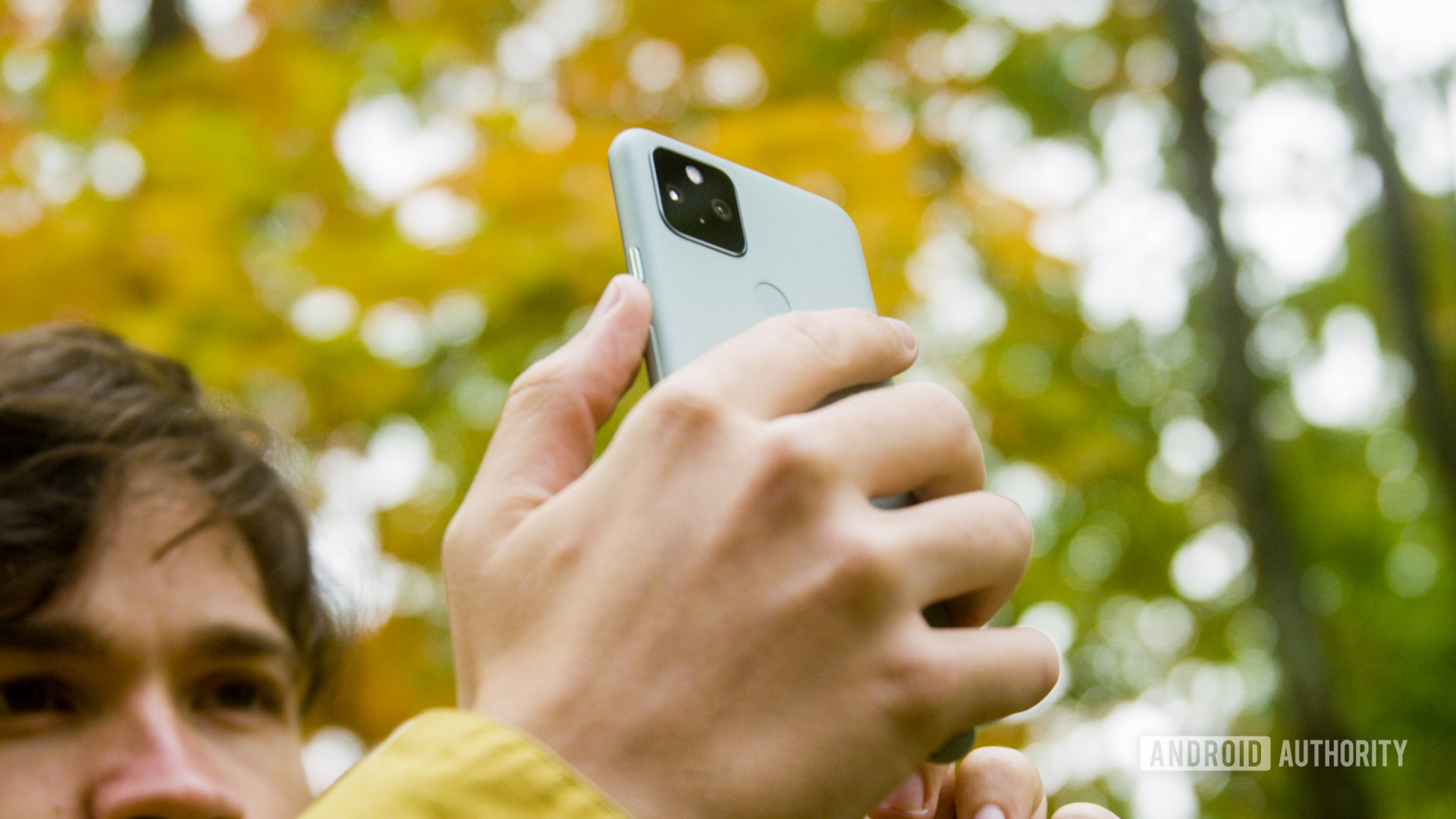Affiliate links on Android Authority may earn us a commission. Learn more.
Google Pixel 5 one year later: Is it still worth buying?
Published onOctober 30, 2021
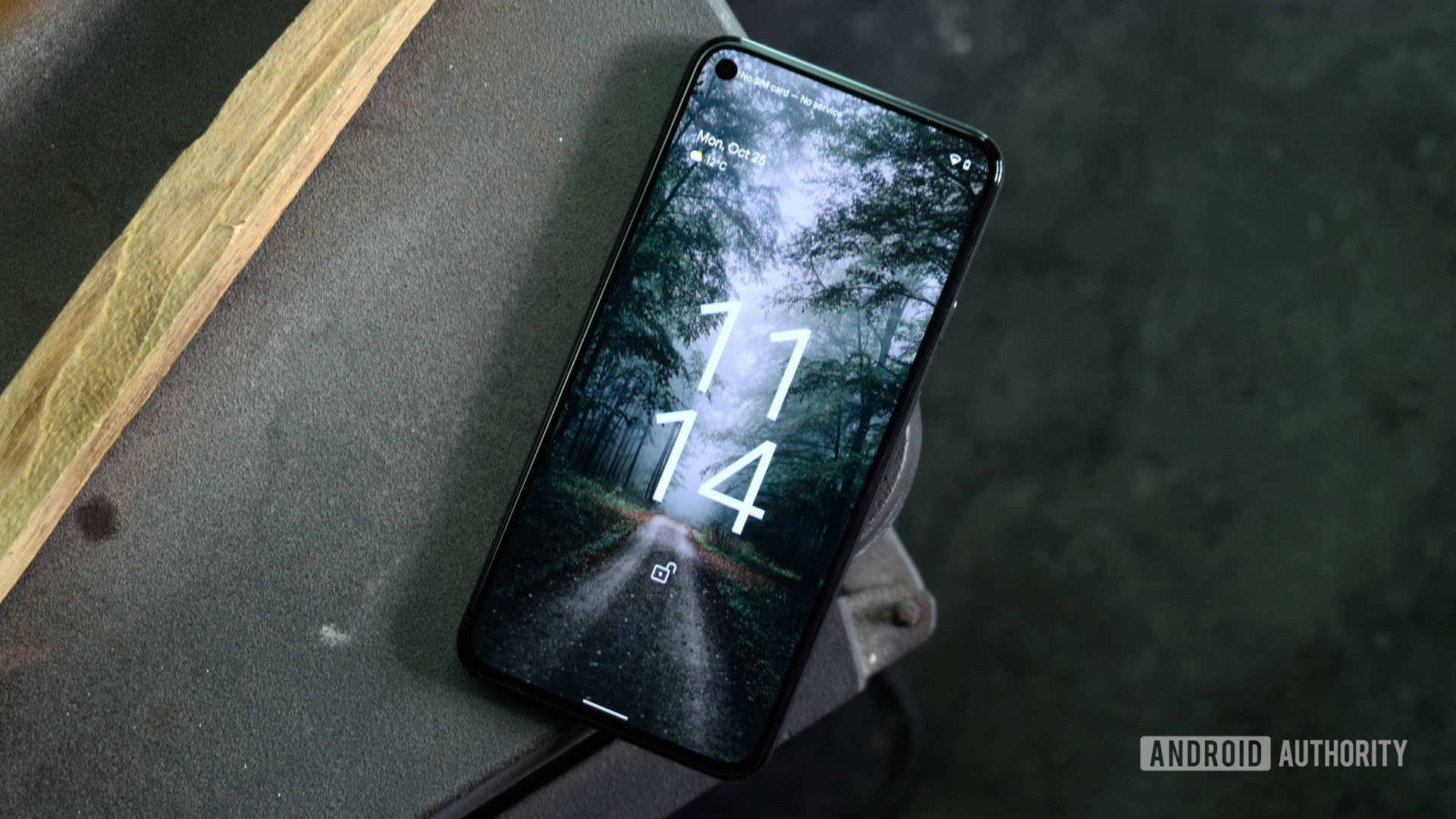
The arrival of the Google Pixel 6 also means it’s time to celebrate the Pixel 5‘s first birthday. Even a year later, the phone stands out in Google’s portfolio as one of the more affordable flagships to grace the market in recent years. Google bucked the trend for increasingly expensive $1,000 hardware, focusing instead on its core software experience while trimming $100 off the price of its previous generation hardware.
Google’s decision to adopt more mid-range specs and a lower price point for its 2020 flagship was contentious at the time. Today it begs the question as to whether the phone has aged well over the past year or if it’s already too dated to recommend? Let’s find out in this Google Pixel 5 long-term review.
The new models: Google Pixel 6 Pro review | Google Pixel 6 review
Google Pixel 5 review recap
Android Authority awarded the Google Pixel 5 a score of 4/5 and a coveted Recommended award. Despite mid-range specs and aging camera hardware, the handset offered great battery life, competitive flagship features, and a top-class software experience at the time, although it may have been a little on the expensive side. You can read our full original review here.
In our six months later revisit (linked below), we were less sold on the $699 phone’s value proposition against the likes of the regularly discounted Samsung Galaxy S20 FE. Even so, the phone still represented a decent buy due to the promise of three years of OS updates. But what’s the phone like a full 12 months down the line?
Read more: Google Pixel 5 — The good and the bad six months later
How has the Google Pixel 5 aged?
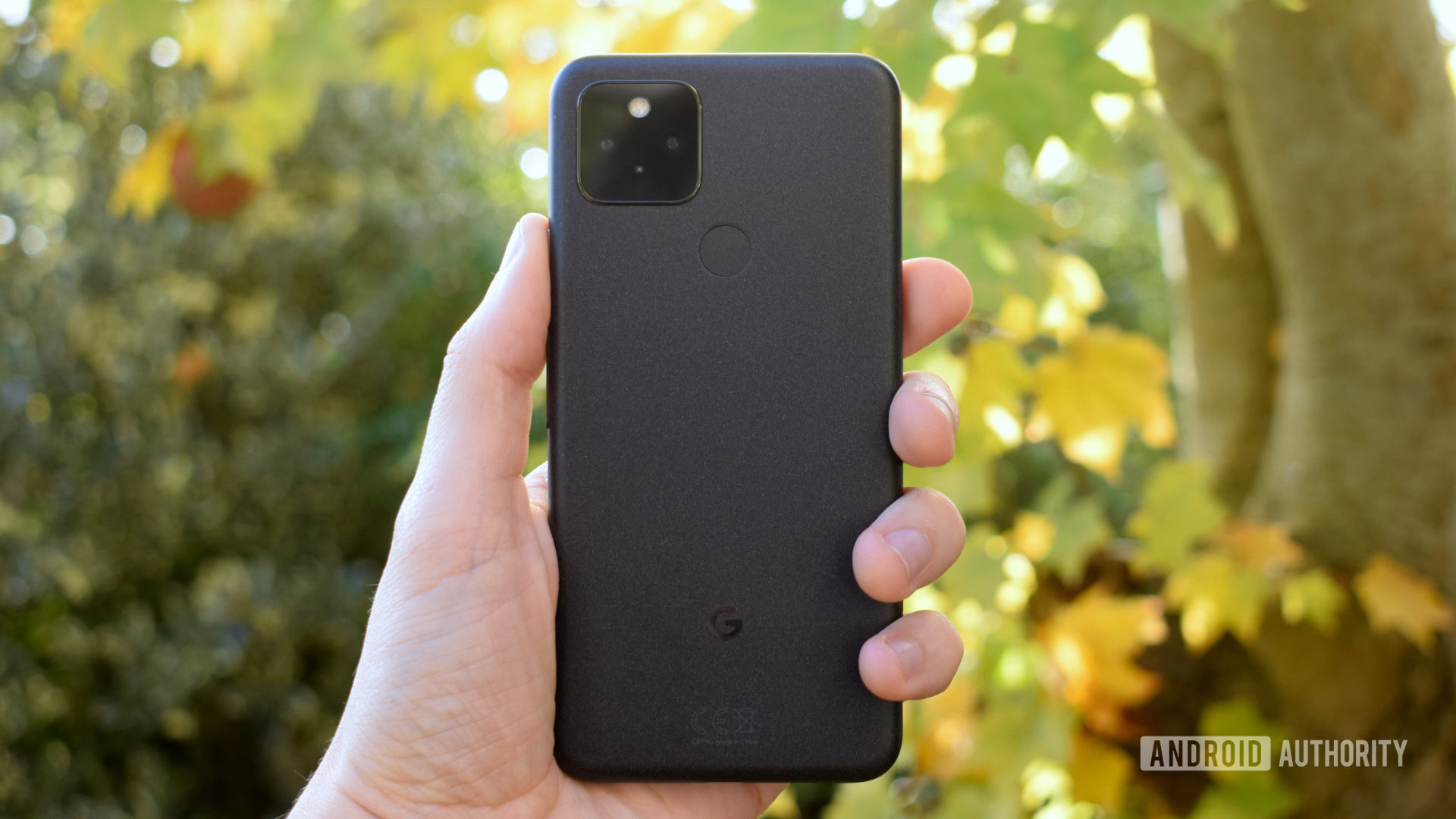
Packing a mid-range Qualcomm Snapdragon 765G processor and 8GB of RAM, the Pixel 5 was far from the cutting edge of the performance metrics at launch. A year later, the phone is even further from the market leaders. Even so, the handset remains more than snappy enough for day-to-day tasks and handles some light gaming just fine. Just stay away from some of the more demanding mobile titles out there. 128GB of internal storage is also still a reasonable configuration, although it might be snug for those with big media collections.
Likewise, the Pixel 5’s 90Hz OLED display still looks great and scrolling is silky smooth, even if the specs aren’t quite as fancy as the 120Hz panels now common across the market. The display’s “compact” 6-inch size is more wieldy than the behemoths that stalk the upper echelons of the mobile market, making it a great pickup if you’re looking for a slightly smaller smartphone.
The Pixel 5 wasn't exactly cutting edge at launch but still holds up reasonably well.
The handset’s IP68 rating and 15W wireless charging capabilities are still competitive with more expensive smartphones on the market. Likewise, the battery life remains a solid contender for one of the best in the business. The choice of a mid-range processor and 4,080mAh cell lends itself to over a day’s worth of battery life. I’ve regularly seen between six to nine hours of screen-on time, depending on usage.
Google’s design, while nothing to write home about at the time, is sturdy for a more moderately priced handset. Although the bio-resin/aluminum back doesn’t feel very premium coming from glass devices, it’s grippy and clearly built to last. The inclusion of a punch-hole selfie camera, rather than a notch, and reasonably trim bezels still look and feel up to date too.
As far as day-to-day use goes, the Google Pixel 5 is still a great handset. However, there are definitely some areas that have not aged quite so gracefully.
A bugbear or two

The Pixel 5 doesn’t get everything right, especially for a phone that once retailed for $700. For starters, the rear fingerprint scanner felt dated back at launch and only seems more out of place as in-display alternatives have trickled down to even cheaper phones — although the in-display fingerprint scanner in the Google Pixel 6 series feels like a step back for responsiveness. Perhaps the Pixel 5 was wise not to adopt this technology in haste.
Check out: The best Google Pixel deals
The phone’s compact design also leaves little room for speakers. There is a stereo pair here but no grill on the top for sound to emanate from. The speakers aren’t bad sounding as such, and the new Adaptive Sound room optimizer helps even out the muddy middles a little at louder volumes. But the presentation sounds off-axis as the exposed speaker is placed in the bottom right. This lack of balance is easily made worse by tilting the phone slightly or covering the bottom ports when holding the phone landscape.
The phone isn’t very future-proof when it comes to 5G either, at least outside of the US. While mmWave support might not be very important around much of the world yet, it’s something to think about when making a flagship purchase. Unfortunately, only customers in the US can buy the mmWave model, while the rest of the world, including Japan, is left with sub-6GHz only. Don’t bank on roaming with foreign 5G networks either.
What about the Pixel 5 camera setup?
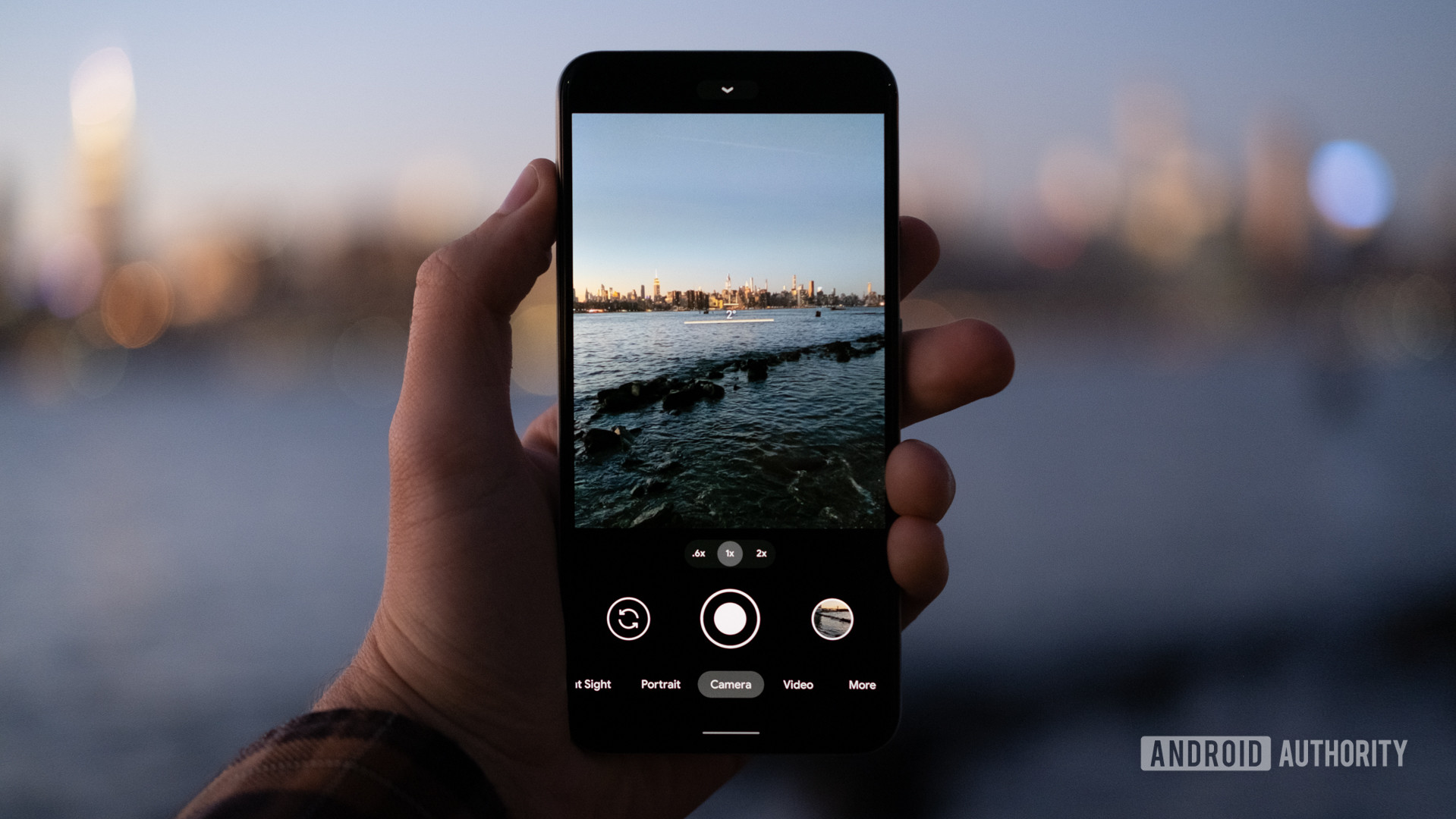
I’ve taken the Pixel 5 out on numerous camera shootouts over the past year and have mixed feelings about the setup. Google hardware formula hasn’t changed much since the original Pixel, and you can tell. While the Pixel 5 still punches above its weight, the camera package shows its age, particularly when it comes to versatility. There’s no zoom camera here, just a main and ultra-wide combination — and even the ultra-wide only has a 107-degree field of view. Right out of the box, you don’t receive the same flexibility as the 10x zoom and 120-degree ultra-wide on the Samsung Galaxy S21 Ultra.
Below is a selection of pictures I’ve taken with the Google Pixel 5 over the past twelve months.
Unless you’re a particularly picky photographer, the Pixel 5 pumps out solid-looking snaps. Boasting colors that balance realism and punch, decent HDR, and powerful low-light shooting capabilities, the main camera has you well covered for a variety of scenarios. Similar features are extended to the phone’s ultra-wide camera, which allows you to fit a fair bit more into your shots. However, there’s a small quality dip when moving to the ultra-wide lens, and it doesn’t offer the cleanest presentation in terms of detail and lens correction.
Also read: The best camera phones you can get
Google’s camera app is also pretty useful and still very much up to date. It allows for manual brightness and contrast controls to help you capture better pictures out of the box. The app also houses Google’s portrait mode that offers OK edge detection for bokeh blur, along with Night Sight, ASTROphotography, and Photo Sphere capabilities. These features are now common across a variety of flagship smartphones, and the Pixel 5 keeps pace, still regularly performing better than some competitors.
However, Google’s excellent software can’t disguise the phone’s aging camera hardware. Closer inspection of our photos reveals higher levels of noise, rough skin textures, and inferior dynamic range compared to the best cameras in the business. The Pixel 5’s pictures certainly aren’t bad, but the results weren’t best in class in 2020 and have fallen a little further behind the curve throughout 2021. While Google has remained stationary, others have overtaken.
Related: Google Pixel 6 vs Pixel 5 — What’s the difference and should you upgrade?
If you’re a fan of Google’s photography software prowess, the Pixel 6’s upgraded sensors and the Pro’s triple camera setup remedy the brand’s lack of hardware innovation. It’s definitely now the better place to start if you’re looking to dabble in Pixel photography.
Video-wise, Google’s phones have never quite been as good as the best in the business. Despite the inclusion of 4K 60fps video, up to 120x time-lapse, slow-motion recording, and a selection of stabilization modes, video quality is noisy and smudged in anything but perfect outdoor lighting conditions.
Upgrade to Android 12
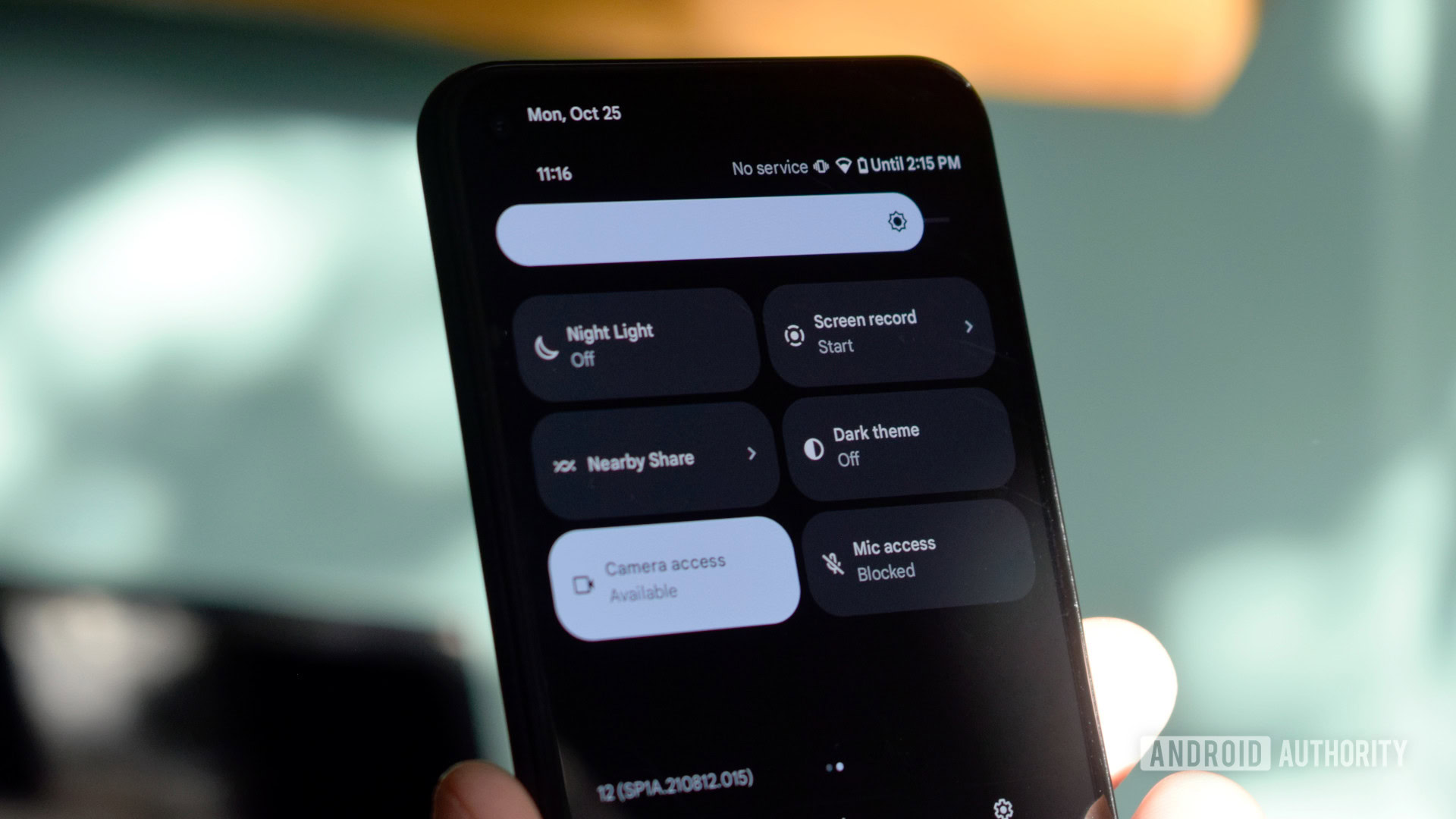
One of the big reasons to buy a Pixel smartphone is timely updates, and the Pixel 5 is already rocking Android 12. It will be many months until some of Google’s biggest rivals roll out the latest OS update to their flagship handsets, let alone last year’s models.
Personally, I don’t care for Google’s revamped Material You interface, the most obvious change with Android 12. The wasted space, bulky quick settings, and distracting animations are a major departure from the function-first approach that gave rise to the praise of “stock” Android, although Google has been moving away from the Keep It Simple, Stupid, approach for a little while now. Your mileage may vary, regardless. There are plenty of us at Android Authority that love the new look.
More details: Everything you need to know about Android 12
Aesthetics aside, Android 12 is a functional piece of kit, if not a little complicated in places. There are now real-time camera and mic permission controls, a revamped privacy dashboard, and improved voice assistant typing, to name just a few new entries. Unfortunately, some of Android 12’s more impressive features are reserved for the newer Pixel 6, for now, including message translation, “Hey Google” quick phrases, and the game optimizer.
The Pixel 5 sports Android 12 but some of the OS' better features are reserved for the Pixel 6.
Google promises three years of OS upgrades for the Pixel 5. There are two more to go, meaning that the handset will remain relevant through the end of 2024 and into 2025. That’s a decent pledge, especially for a more affordable flagship, and one that still sits nearer the top of the pile — although it’s a long way off the long-term support Apple provides for its iPhone range.
Google Pixel 5 long term review: The verdict
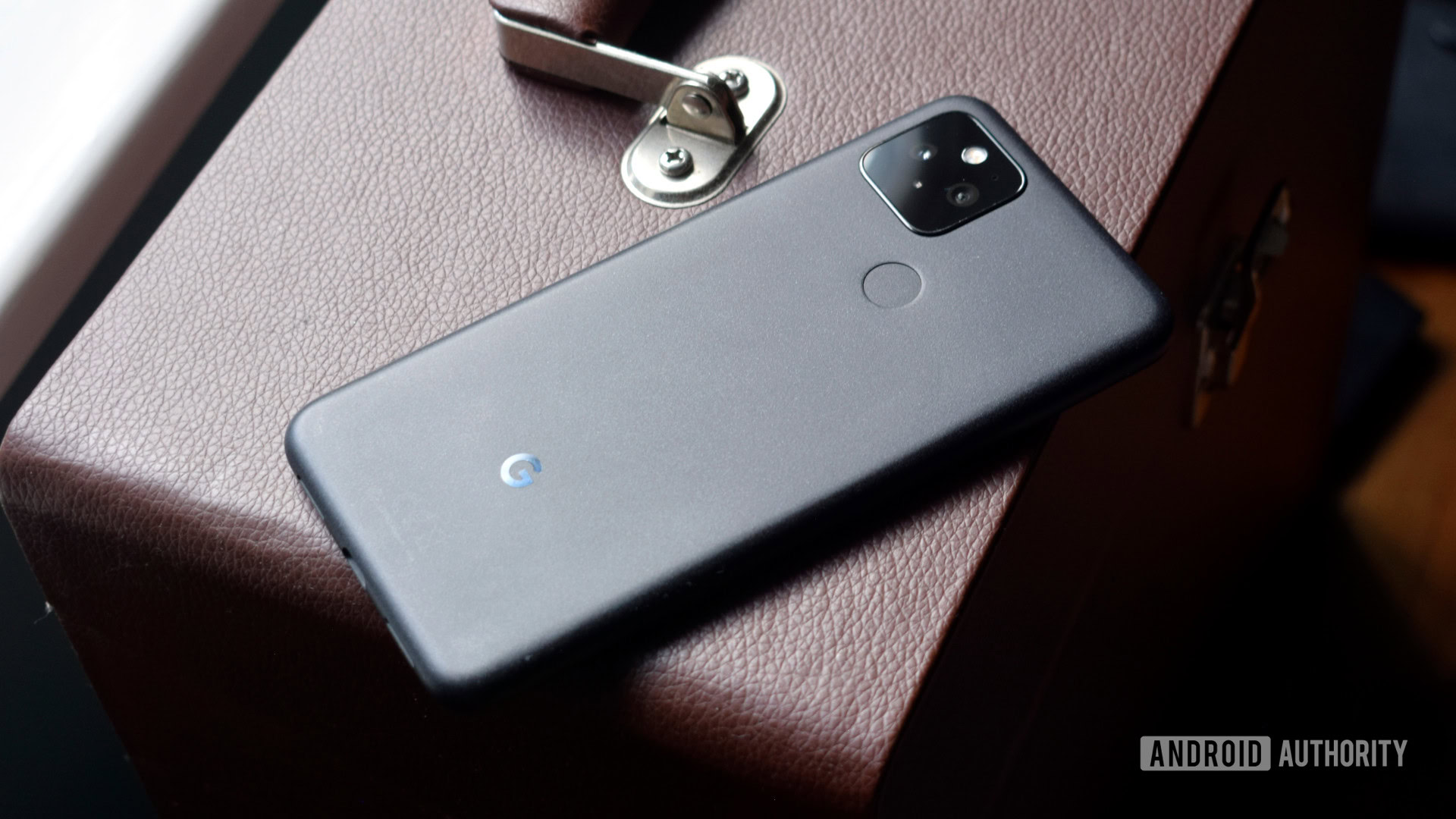
So is the Pixel 5 still a good smartphone? Sure. Should you buy it? Well, no.
Google no longer sells the Pixel 5 on its storefront and appears to be phasing out the handset in favor of its newer Pixel 5a 5G. The Pixel 5a offers very similar specifications and comes in at a more affordable $449, at least in the US and Japan — other regions are left with the lower-end Pixel 4a. It’s a good job, too, because, at $699, the Pixel 5 would be impossible to recommend instead of the company’s new Pixel 6, which retails for a very reasonable $599.
Google Pixel 5 one year later: Is it still worth buying?
While the Pixel 5 is still a perfectly serviceable handset twelve months later, Google has managed to pack way more into its newer Pixel 6 while also knocking $100 off the price tag. With an all-new design, faster charging, a custom flagship-tier Google Tensor processor, a more modern camera package, and a slightly longer update pledge, Google has really stepped up its game with the Pixel 6 series.
The Pixel 5 is a fine phone but Google has outdone it with the more affordable Pixel 6.
You can still find the Pixel 5 renewed or “as-new,” but it’s hard to recommend it at anything over $500. Given the lower-cost entry point and superior future-proofing of the Pixel 6, you’re better off spending your money on Google’s latest smartphone.
